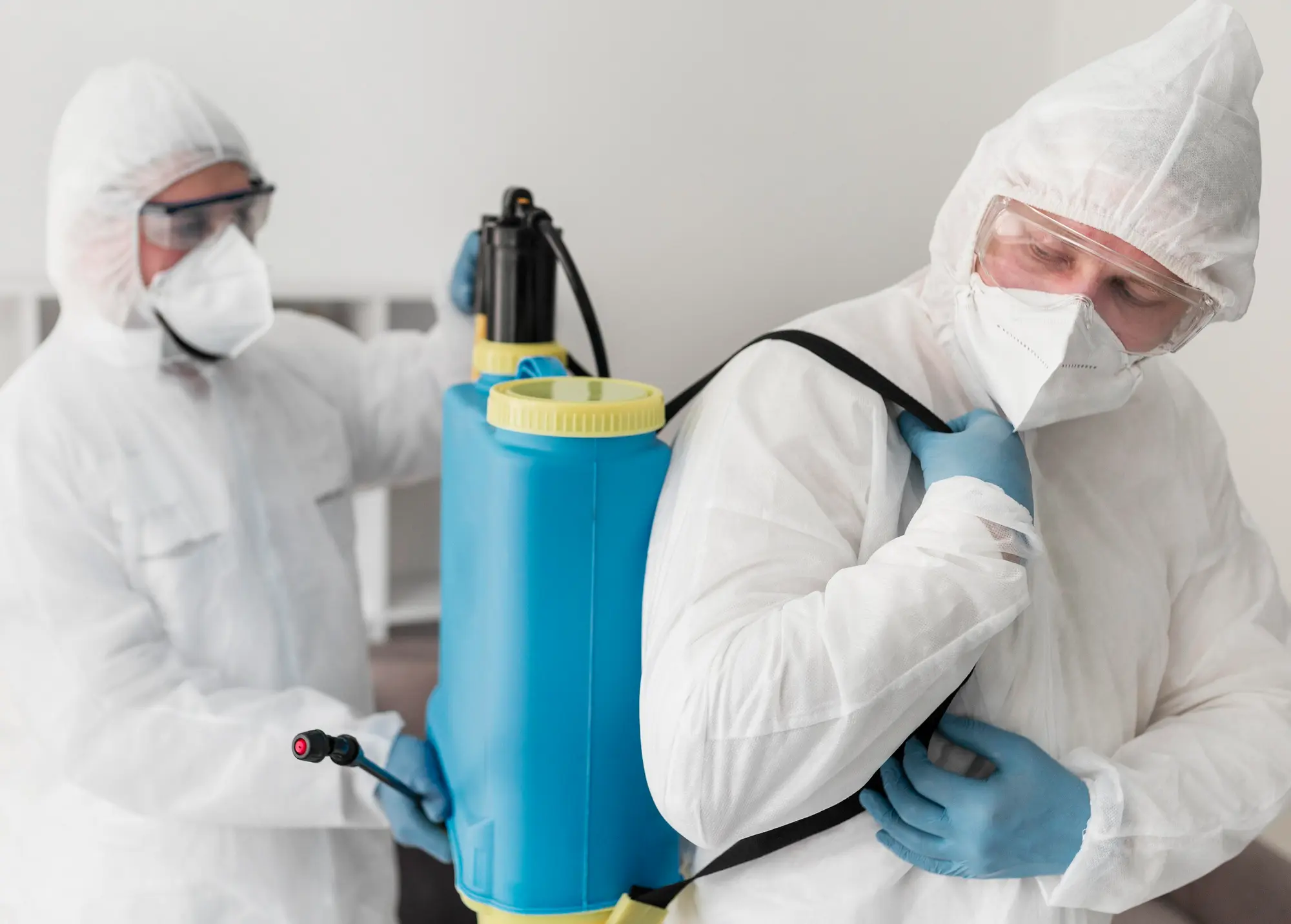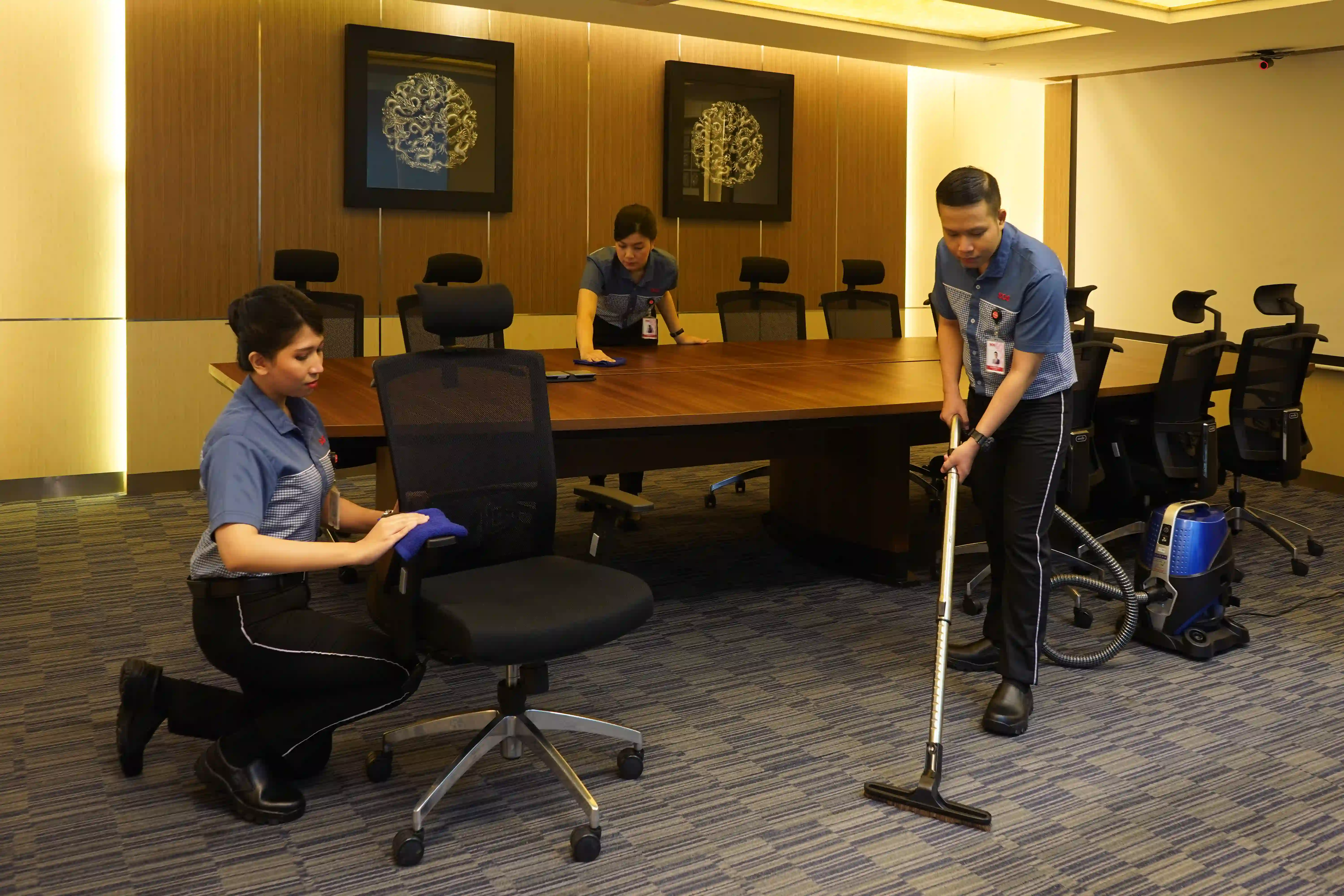7 Differences Between Hot Fogging & Cold Fogging
01 August 2025

Choosing between hot fogging and cold fogging should not be done carelessly. The wrong method could result in less-than-optimal disinfection or even pose health risks. This article will discuss the difference between hot fogging and cold fogging, from technology and cost to safety and duration of effect.
Read on for a complete analysis, plus expert recommendations for your needs!
What is Hot Fogging?
Hot fogging is a fogging method that uses heat to transform disinfectant liquid into fine mist or vapor. This hot mist can spread widely and evenly, making it very effective for covering open or hard-to-reach areas.
Key characteristics of hot fogging:
-
The liquid is heated until it turns into ultra-fine vapor particles.
-
Produces thick white fog visible during application.
-
Best suited for warehouses, open fields, factories, or outdoor areas.
-
Should be performed in empty spaces with adequate ventilation.
Hot fogging is widely used in agriculture, warehousing, and professional pest control because it efficiently disperses active ingredients across large areas.
What Is Cold Fogging?
Cold fogging is a method of spraying disinfectants using high air pressure without heating. This technique produces a cool mist (aerosol) made up of ultra-fine particles that can easily spread throughout a room, even into hard-to-reach areas.
Key characteristics of cold fogging:
-
Particles are generated through pressure, not by heating the liquid.
-
Suitable for sensitive areas such as offices, hospitals, schools, or the food industry.
-
Distributes evenly without leaving visible residues.
Cold fogging is often chosen to maintain clean air and surfaces without significantly disrupting activities in the treated area.
Key Differences Between Hot Fogging & Cold Fogging?
Before deciding which method is right for you, it’s important to understand how the differences between hot fogging and cold fogging can affect pest control effectiveness. Here are the seven main distinctions to consider:
1. Technology & Working Principle
Hot fogging uses machines that heat insecticide solutions until they form hot smoke. The smoke is then released into the air to spread across the target area.
Cold fogging, on the other hand, uses high pressure to convert liquid into a cool, ultra-fine mist without heating.
Hot fogging’s heating technology works best for open spaces that require deep smoke penetration, while cold fogging is more effective indoors since it doesn’t produce excess heat.
Read Also: 6 Pest Control Skills to Maintain a Pest-Free Environment
2. Particle Size
Cold fogging produces much finer mist particles (Ultra-Low Volume/ULV), which remain suspended in the air longer and can reach hidden areas.
Hot fogging tends to produce larger particles that settle more quickly after spraying. Particle size significantly impacts pest control effectiveness—especially for flying insects and pests hiding in tiny crevices.
3. Coverage Area & Mobility
Hot fogging typically covers a larger area in a shorter time, as hot smoke quickly spreads through open spaces—making it ideal for outdoor or large industrial applications.
Cold fogging offers more targeted coverage, making it more precise for indoor treatment.
Companies can choose based on whether they need broad coverage for open spaces or precise treatment in enclosed areas.
4. Environmental & Health Impact
Cold fogging is more environmentally friendly since it doesn’t produce thick smoke or high heat that could affect air quality.
It’s also considered safer for employees because it doesn’t expose them to excessive heat or chemical vapors.
Hot fogging, however, can pose a higher risk of respiratory irritation or health issues if proper protective measures aren’t taken.
Oleh karena itu, pertimbangan terhadap keselamatan karyawan menjadi faktor penting dalam menentukan metode yang digunakan.
Read Also: 7 Office Cleaning Service Tasks for Maximum Cleanliness
5. Chemical Consumption
Hot fogging generally requires a larger volume of insecticide due to its wide and fast application.
Cold fogging is more chemical-efficient, as its ultra-fine mist better reaches targeted areas.
For companies aiming to cut operational costs and minimize environmental impact, cold fogging can be a more economical option.
6. Execution Time & Effect Duration
Hot fogging is usually quicker to apply, but its control effect may be shorter since the smoke settles faster.
Cold fogging may take slightly longer to apply, but its fine mist particles tend to linger longer in the air and on surfaces, providing extended residual effects.
7. Cost and Technology Availability
Hot fogging generally has lower short-term costs due to its simpler equipment. However, the higher use of chemicals can increase expenses in the long run.
Cold fogging requires a higher initial investment for ULV (Ultra Low Volume) technology equipment, but it offers better efficiency.
Companies can adjust their budget and operational needs when choosing the most suitable fogging method.
Comparison Table – Hot Fogging vs Cold Fogging:
|
No |
Aspect |
Hot Fogging |
Cold Fogging |
|
1 |
Technology |
Uses heat to produce smoke |
Uses high pressure without heating |
|
2 |
Particle Size |
Larger, settles quickly |
Smaller (ULV), stays suspended longer |
|
3 |
Best For |
Open & large areas |
Enclosed & specific areas |
|
4 |
Environmental Impact |
Thick smoke, potential irritation |
More eco-friendly & safer |
|
5 |
Chemical Use |
Higher consumption |
More efficient |
|
6 |
Effectiveness Time |
Quick application, shorter effect |
Longer application, longer-lasting effect |
|
7 |
Cost & Equipment |
Cheaper, simpler tools |
Pricier, advanced ULV tools |
How to Choose the Right Fogging Method?
After understanding the differences between hot fogging and cold fogging, companies should consider several additional factors before deciding on the best option for their work environment:
1. Identify the Type of Pest
Hot fogging works best for larger pests active in open areas, while cold fogging is more effective against small insects or microorganisms hiding in tight spaces.
2. Consider Location & Area Size
For open areas such as warehouses, gardens, or industrial yards, hot fogging is recommended.
For enclosed spaces like offices, labs, or production rooms, cold fogging is safer and more efficient.
3. Prioritize Employee Safety
Cold fogging poses fewer health risks since it doesn’t involve high heat and is gentler on the respiratory system.
Personal protective equipment (PPE) is still necessary for both methods, but cold fogging is generally easier to manage.
Read Also: 12 Must-Have Cleaning Service Tools for Professional Cleanliness
4. Evaluate Available Operating Time
If operational downtime is limited, hot fogging’s faster application may be more practical.
For longer-lasting results, cold fogging can be more beneficial despite its slightly longer application time.
5. Weigh Budget & Efficiency
Cold fogging may provide better long-term cost efficiency due to reduced chemical use.
However, companies must also consider the initial investment in equipment and technology.
Understanding the differences between hot fogging and cold fogging is crucial to selecting the most effective pest control method for your company.
Each has its own pros and cons, and with the right planning, your company can create a healthier, safer, and more productive work environment.
With SOS professional outsourcing services, pest control can be carried out more effectively and in compliance with regulations.
Percayakan Pengendalian Hama Perusahaan Anda kepada Tim Ahli SOS!
SOS provides customized pest control solutions to keep your workplace healthy while promoting sustainability.
Pests don’t just cause disturbances—they can also severely damage your company’s reputation. Keep your workplace pest-free with our integrated services.
We offer tailored cleaning and pest control solutions for a wide range of industries, from manufacturing to corporate offices.
Contact SOS via WhatsApp today for a free consultation and schedule your site inspection now!



